On November 8, 2023, collector Charles Hack paid more than $2 million for a postage stamp. It was not just any stamp—it was an example of the famous “inverted Jenny” issue from 1918. The stamps were intended to celebrate the start of airmail service in the United States, but the Curtiss JN-4 Jenny was accidentally printed upside down on some of the sheets. One sheet with 100 stamps escaped the postal service’s recall, and those stamps became a holy grail for collectors. Hack, in fact, had previously purchased two, but his most recent acquisition was the only one of the 100 still unaccounted for when it emerged in 2018. It had been stored in a safe-deposit box for a century and was in mint condition. Hack tried to buy it then, but his bid fell short. That wasn’t the case this time.
With the inverted Jenny, it was the mistake, not the airplane, that made the stamp so alluring. But airplane buffs who want to collect stamps featuring airplanes—while spending less than $2 million doing so—will find no shortage of specimens from around the world and featuring a wide variety of airplanes.
The world’s first postage stamp to feature a flying machine was issued by the United States in January 1913. That 20-cent stamp depicted what appears to be a Wright 1909 military flyer. The stamp was one of a set intended to celebrate the regular delivery of packages to both urban and rural addressees, thus introducing the concept of mail order to American consumers. The stamp bore the inscription “Aeroplane Carrying Mail” five years before the U.S. Postal Service inaugurated official airmail services.
Outside the United States, many countries have marked the anniversaries of historic aviation events with stamps. These have included the anniversary of the first powered flight of a human-carrying airplane by the Wright brothers, the beginning or end of various world conflicts or the progress of science or engineering that enabled the technology we have today. The countries of origin sometimes seem unconnected to the aircraft or events depicted on the stamps. Some smaller countries expressly issue high volumes of new stamps each year, less for the purpose of carrying their mail than to generate revenue from sales to stamp collectors. However, most have some affiliation through prior colonial or trade links with the country in which the historic event took place, or they commemorate flights or airplanes of worldwide significance, such as Louis Blériot’s pioneering flight across the English Channel in 1909 or Charles Lindbergh’s 1927 New York-to-Paris flight in the Spirit of St. Louis, which has graced stamps from countries as widespread as Nicaragua, Samoa and Niger.
The examples here demonstrate the wide range of aviation stamps—and they are available at reasonable prices.
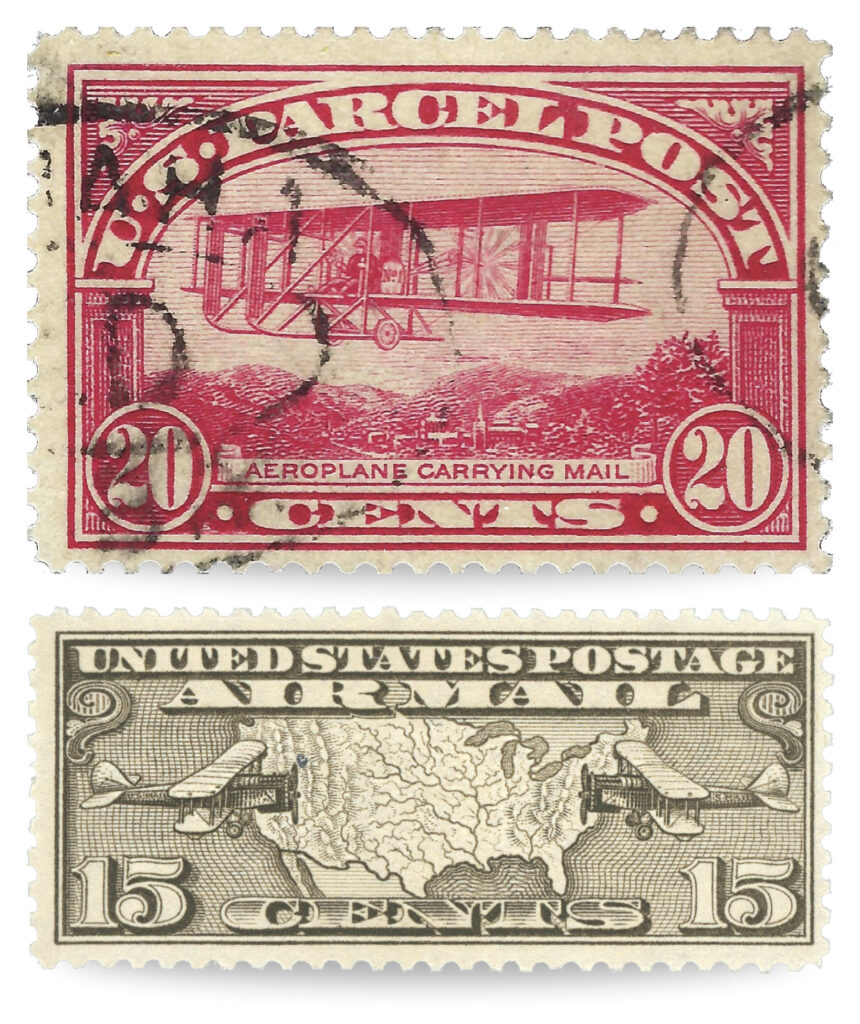
(Top: Courtesy Gerry Frazier; Above: Guy Aceto Collection)
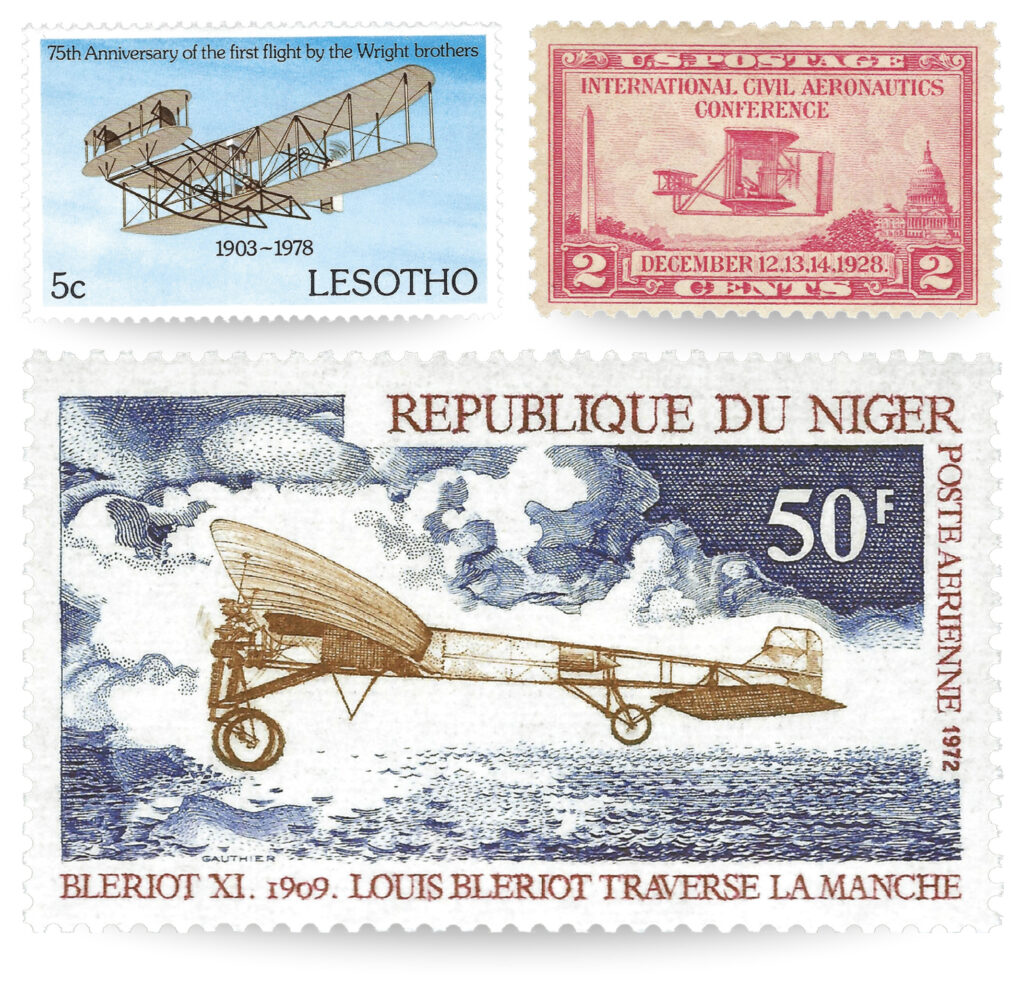
(Courtesy Gerry Frazier)
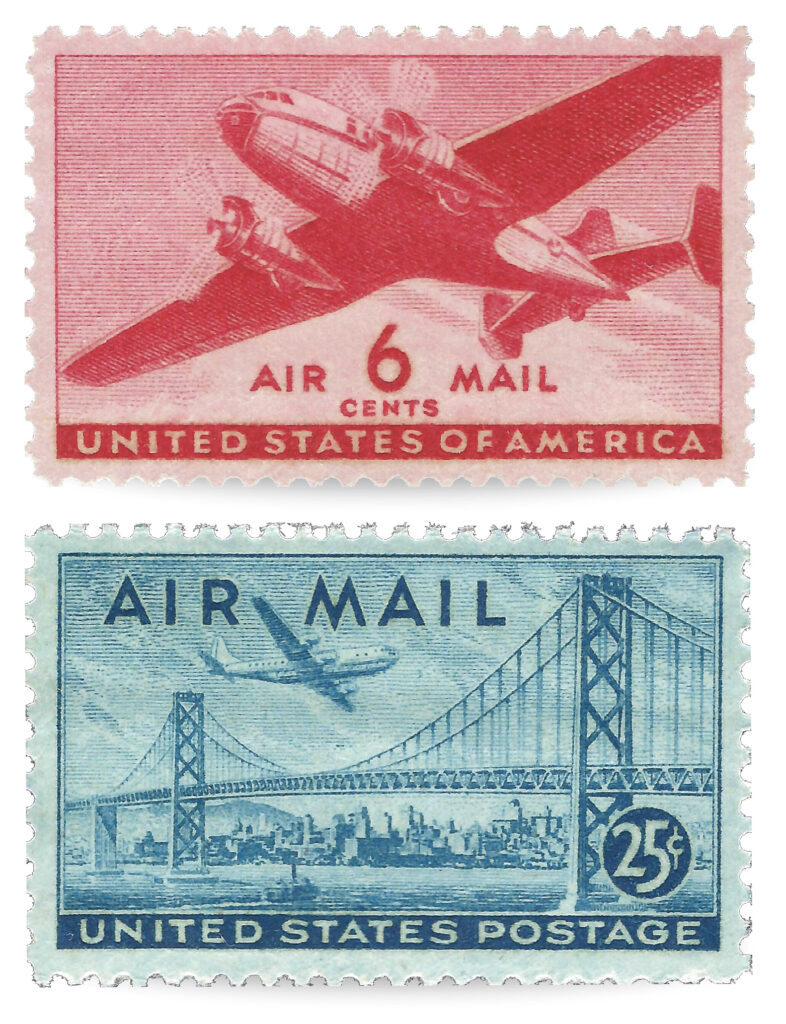
(Courtesy Gerry Frazier)
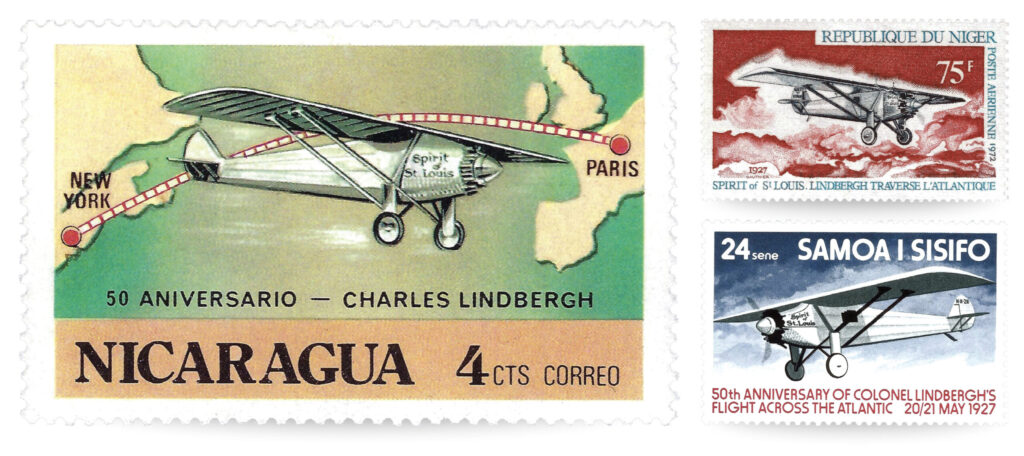
(Courtesy Gerry Frazier)
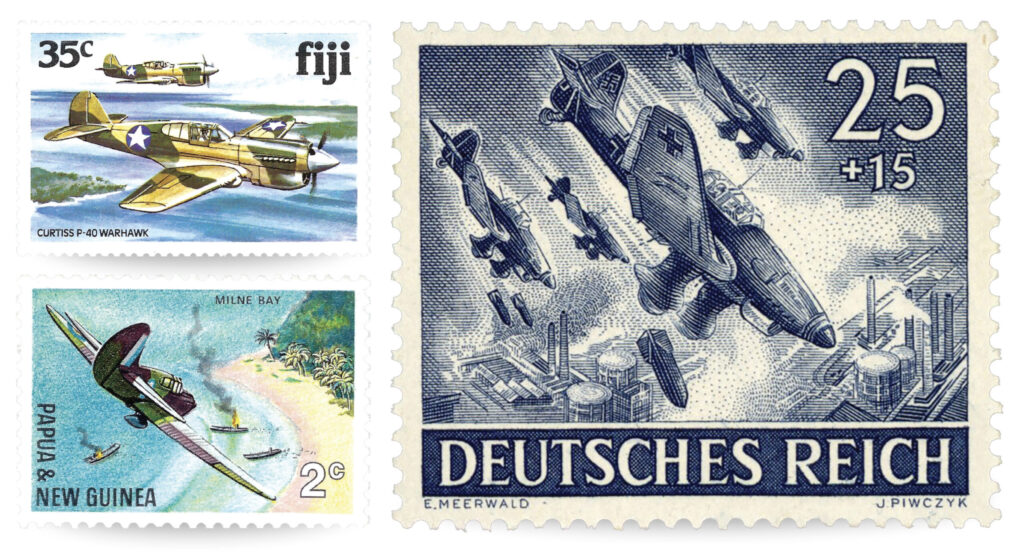
(Left, both: Courtesy Gerry Frazier; Right: Guy Aceto Collection)
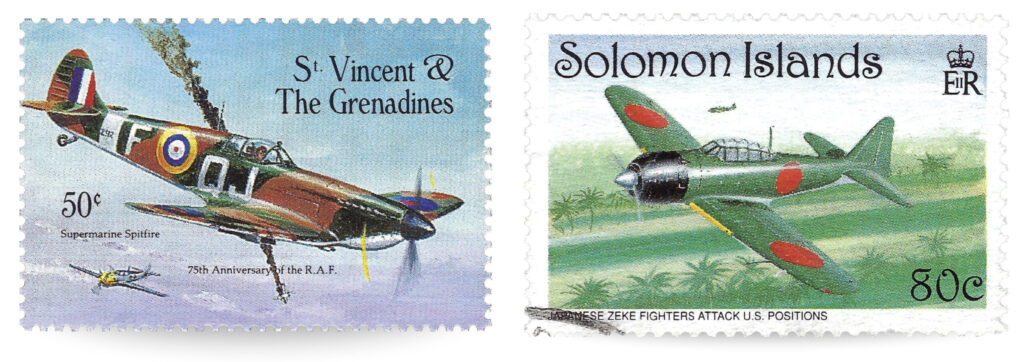
(Courtesy Gerry Frazier)

(Courtesy Gerry Frazier)
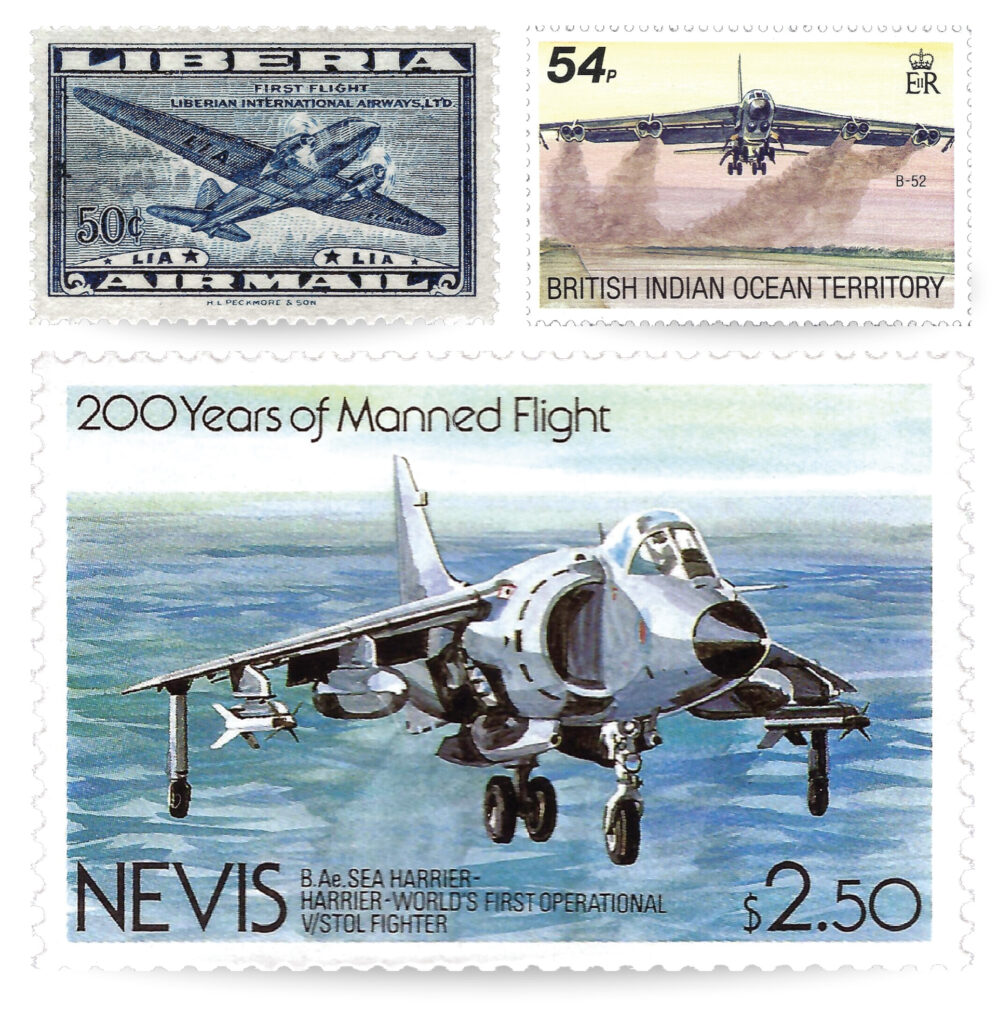
(Courtesy Gerry Frazier)
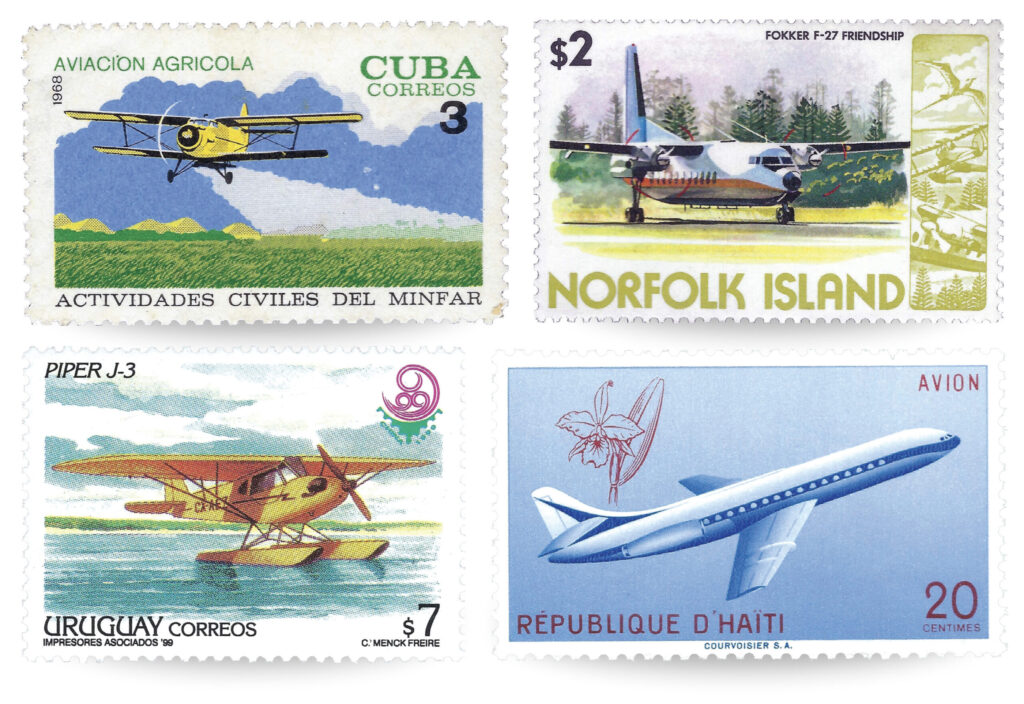
(Courtesy Gerry Frazier)
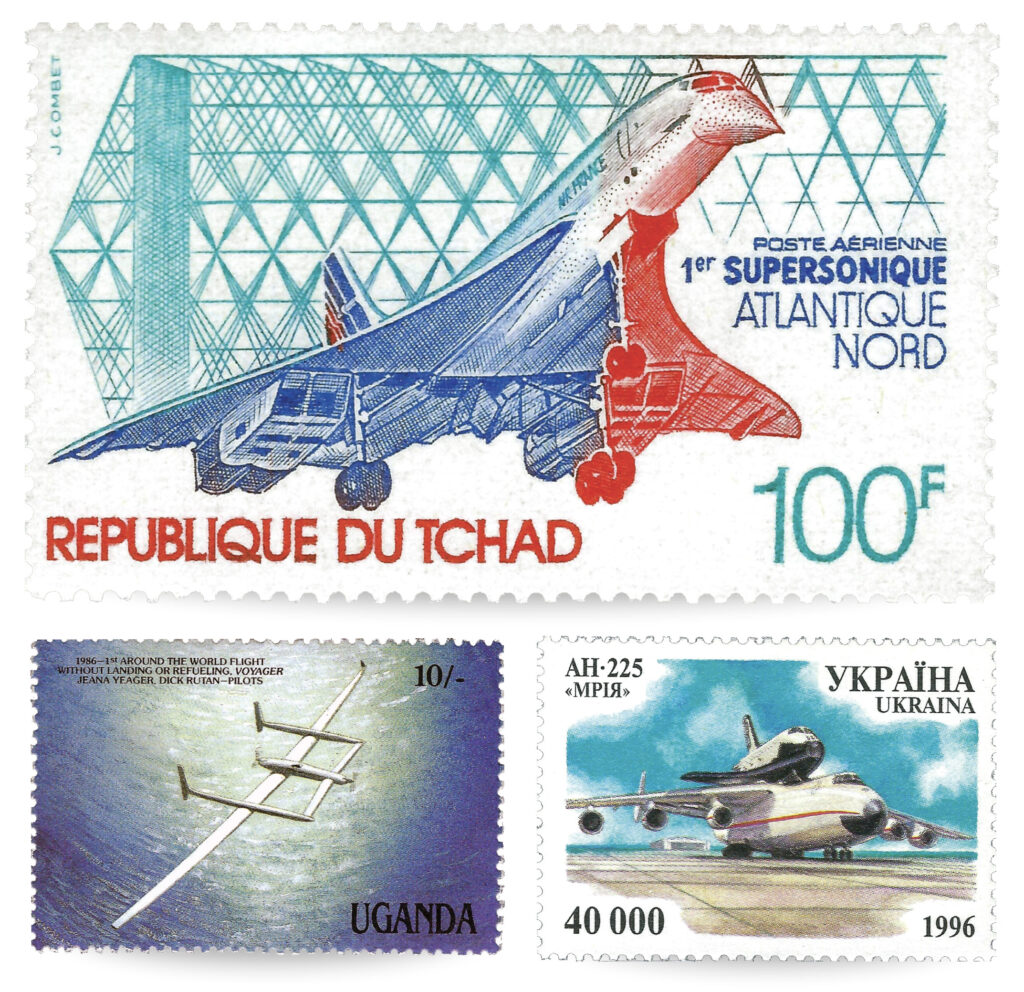
(Courtesy Gerry Frazier)
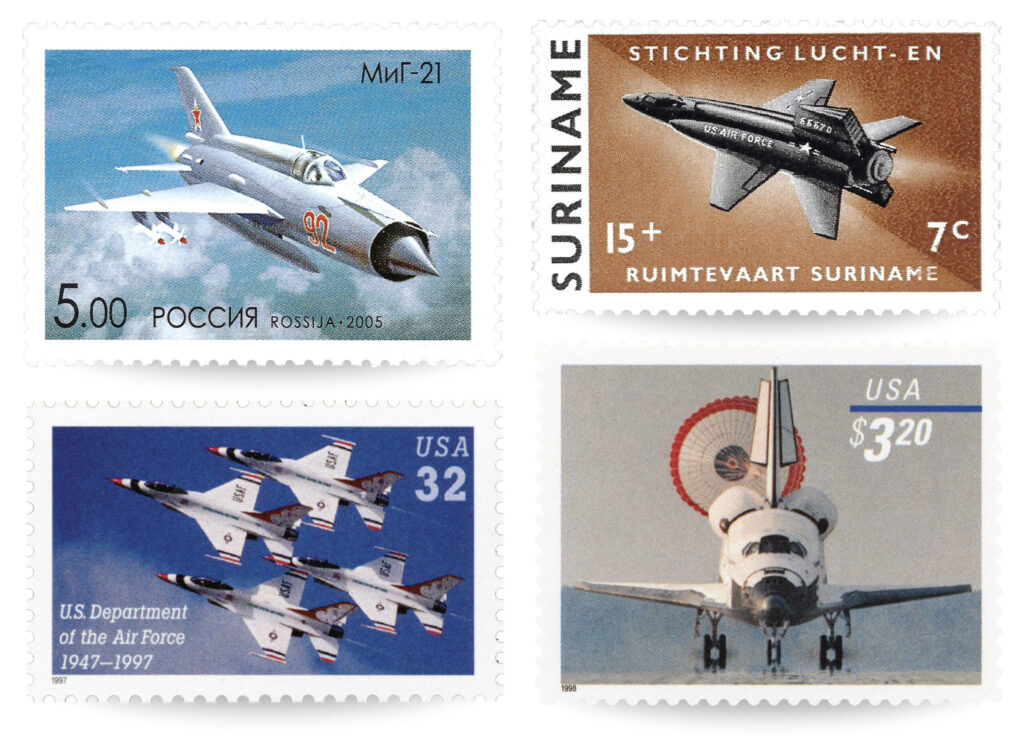
(Top, both: Courtesy Gerry Frazier; Bottom, both: Guy Aceto Collection)




